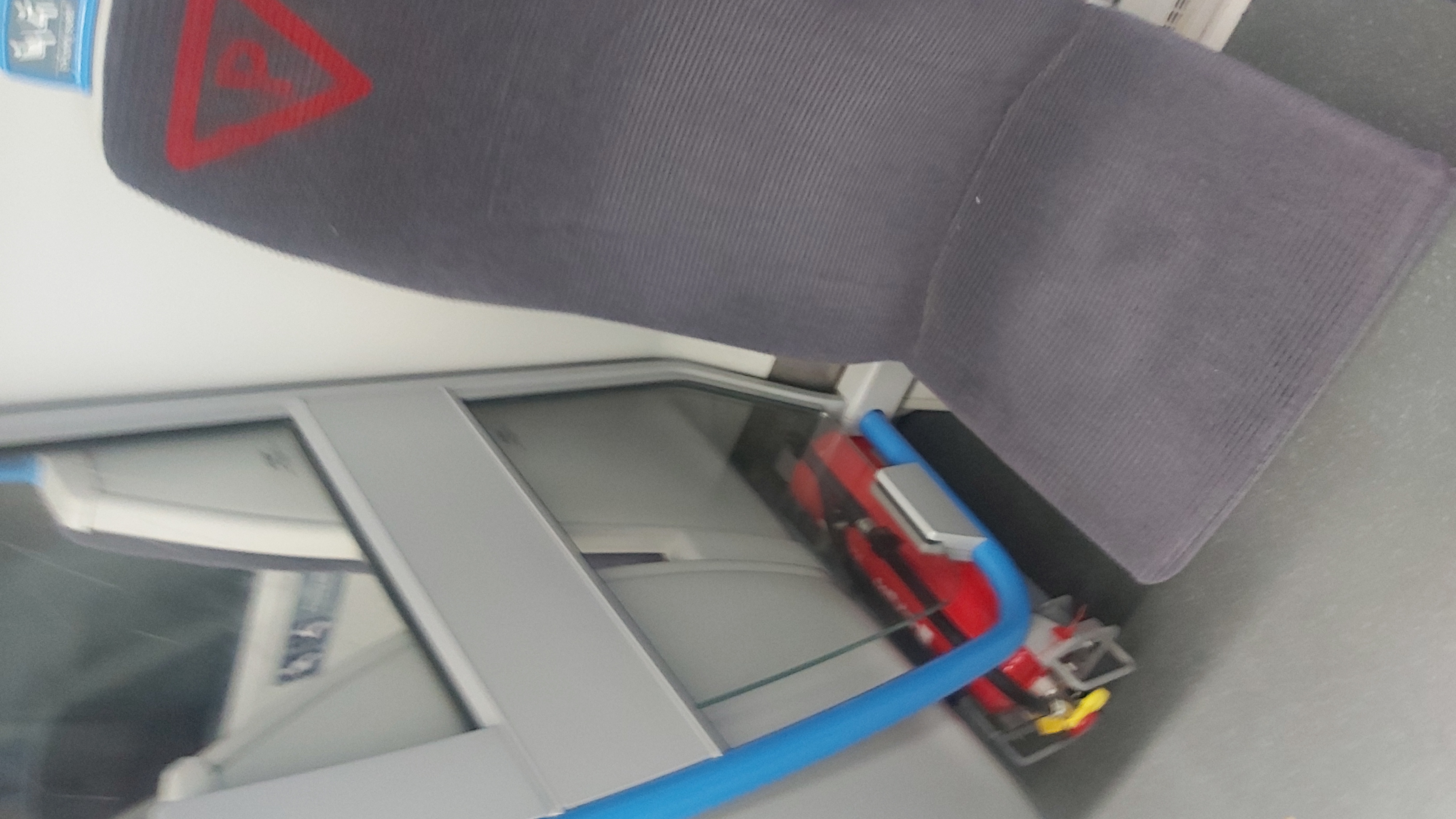The Northern City Line is a National Rail line within London. It runs from Finsbury Park in the north to Moorgate in the City. It's an oddity, constructed like a Tube line, but big enough for mainline-size trains. It was constructed with the idea of allowing electrified Great Northern services to run from their commuter heartlands right into the City at Moorgate, but the Great Northern and later the LNER dragged their feet on electrifying those services for many years.
In 1933 the line was handed over to the newly-formed London Transport, and it became part of the Northern Line in 1939. The line survived many schemes to extend it into something more useful unscathed, although service was cut back to Highbury & Islington by the Victoria Line. Finally, in 1970, British Rail set out to electrify the Great Northern commuter services. The line was reconnected to the mainline via the surface platforms at Finsbury Park, and an agreement was made to transfer the line to British Rail.
Before this could happen, in February 1975, the Northern City Line platforms at Moorgate were the site of the worst peacetime disaster in the history of the London Underground. A driver failed to stop for unknown reasons at the end of the tunnel, causing 43 deaths, including his own. The accident was worsened by the operation of Tube trains that were too small for the tunnels, causing carriages further back to ride up on top of the front carriage.
The route was operated by British Rail, then the Network SouthEast sector from 1982 until privatisation, where it bounced around a few different operators before landing in the hands of Great Northern, a branch of the Govia Thameslink Railway. The services are operated using Class 717 electric multiple units, which are part of the Siemens Desiro City family.
Highbury & Islington is a significant interchange, with two Overground services, one terminating here, and the Victoria Line, which has cross-platform interchange with the NCL. Despite this, the station was easily quiet enough to take some pictures without getting anyone too in shot. One thing the images won't get across is how dark it was down here.
The tunnel portal, heading south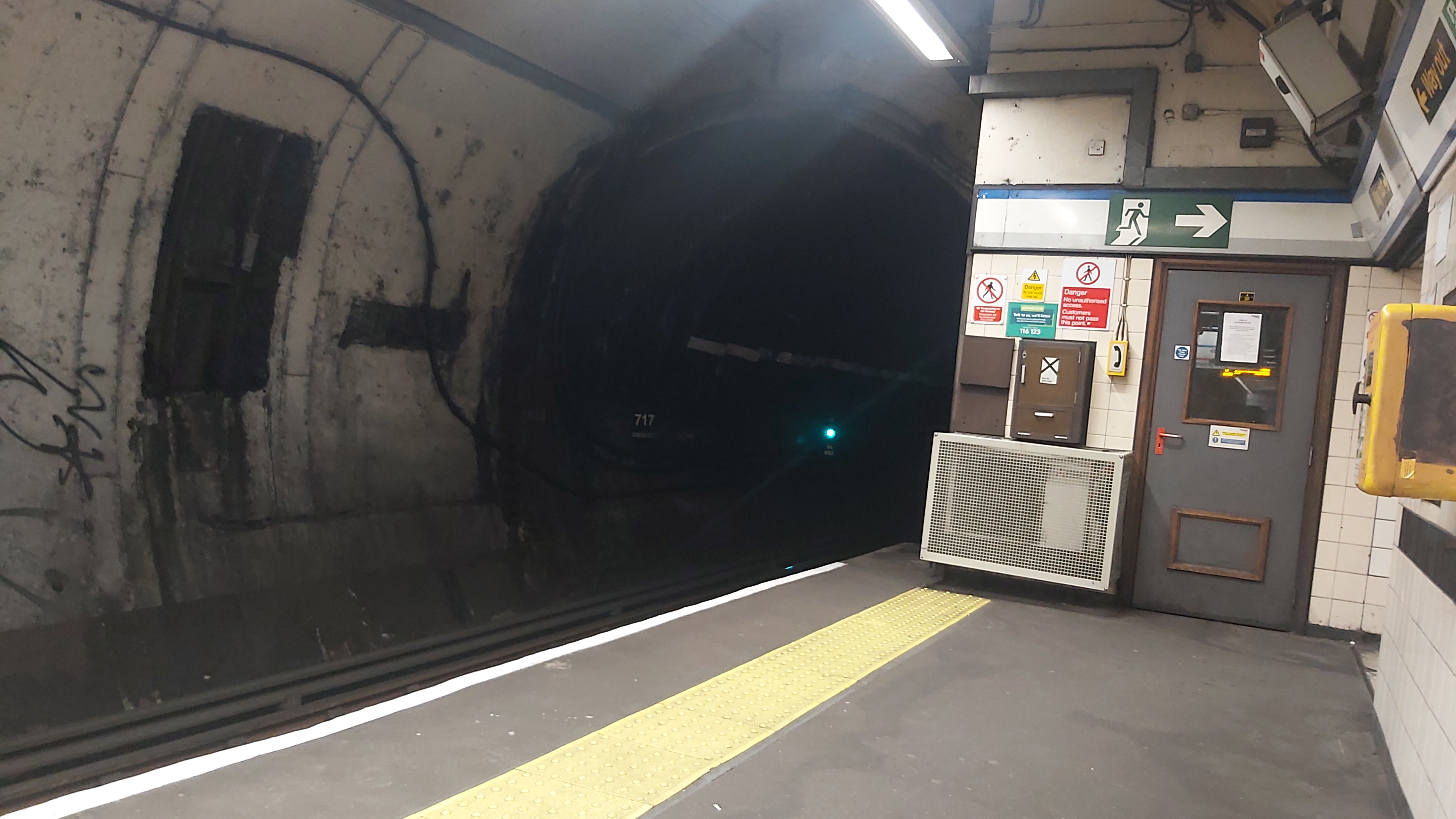
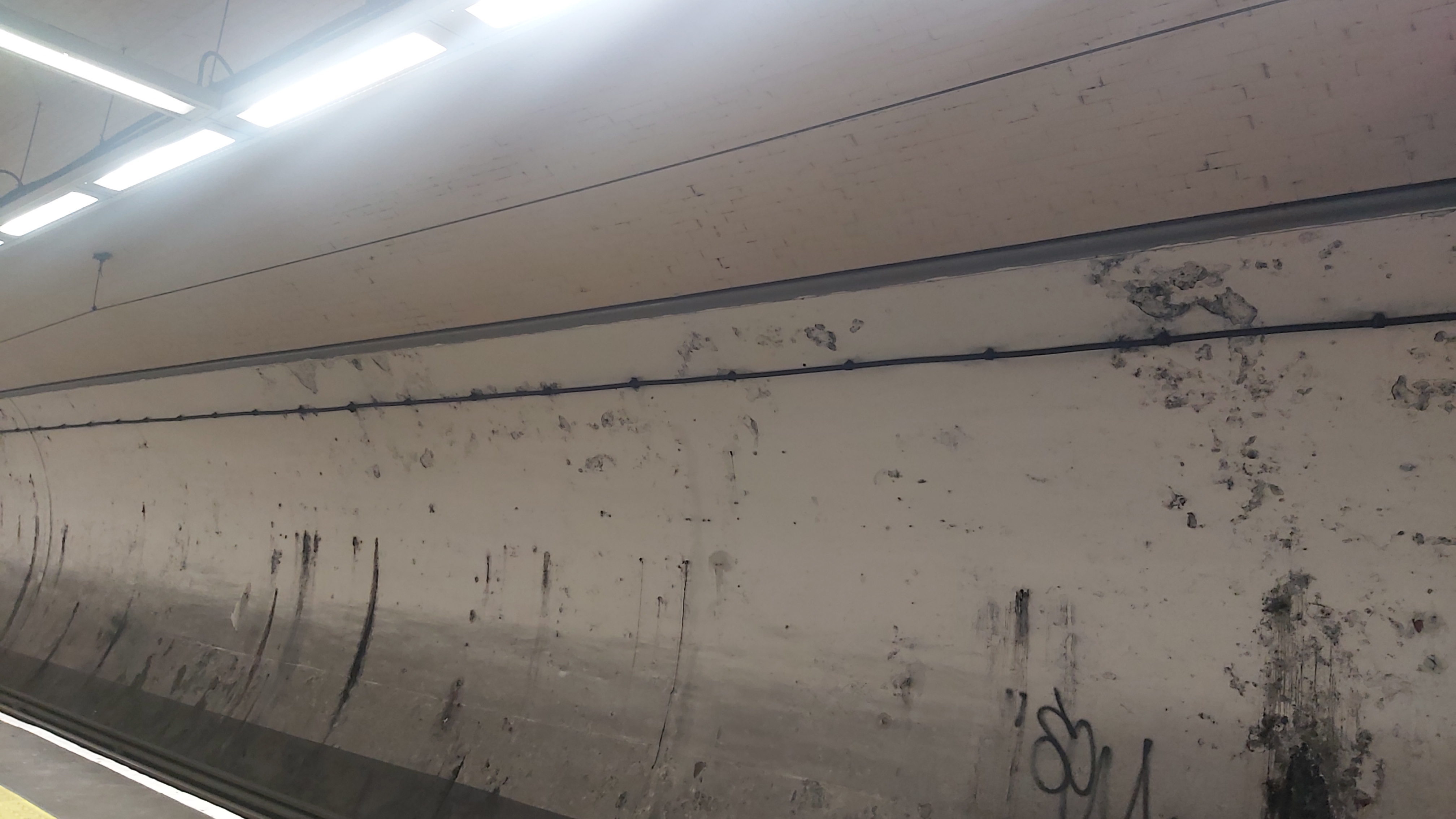
You won't find Essex Road station on the Tube map, because it only serves the NCL. It sees less service than any of the other stations on the line, partly because its less than a kilometre from the previous station at Highbury & Islington. Essex Road is also unusual in having no escalators, only a spiral staircase, and lifts (which I used). The station building on the surface is small and nondescript, on the corner of Canonbury Road and Essex Road, nextdoor to a small public garden.
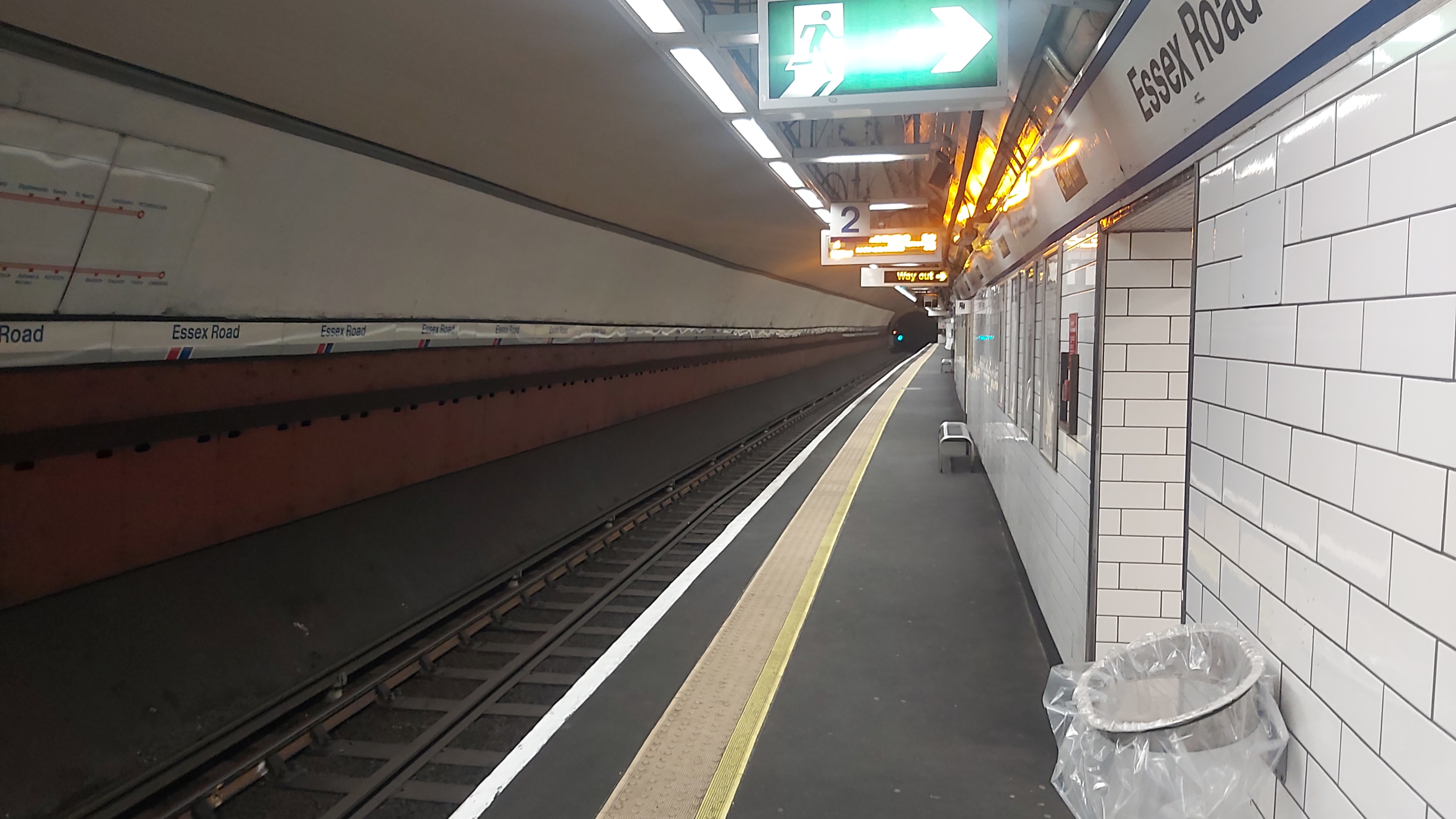
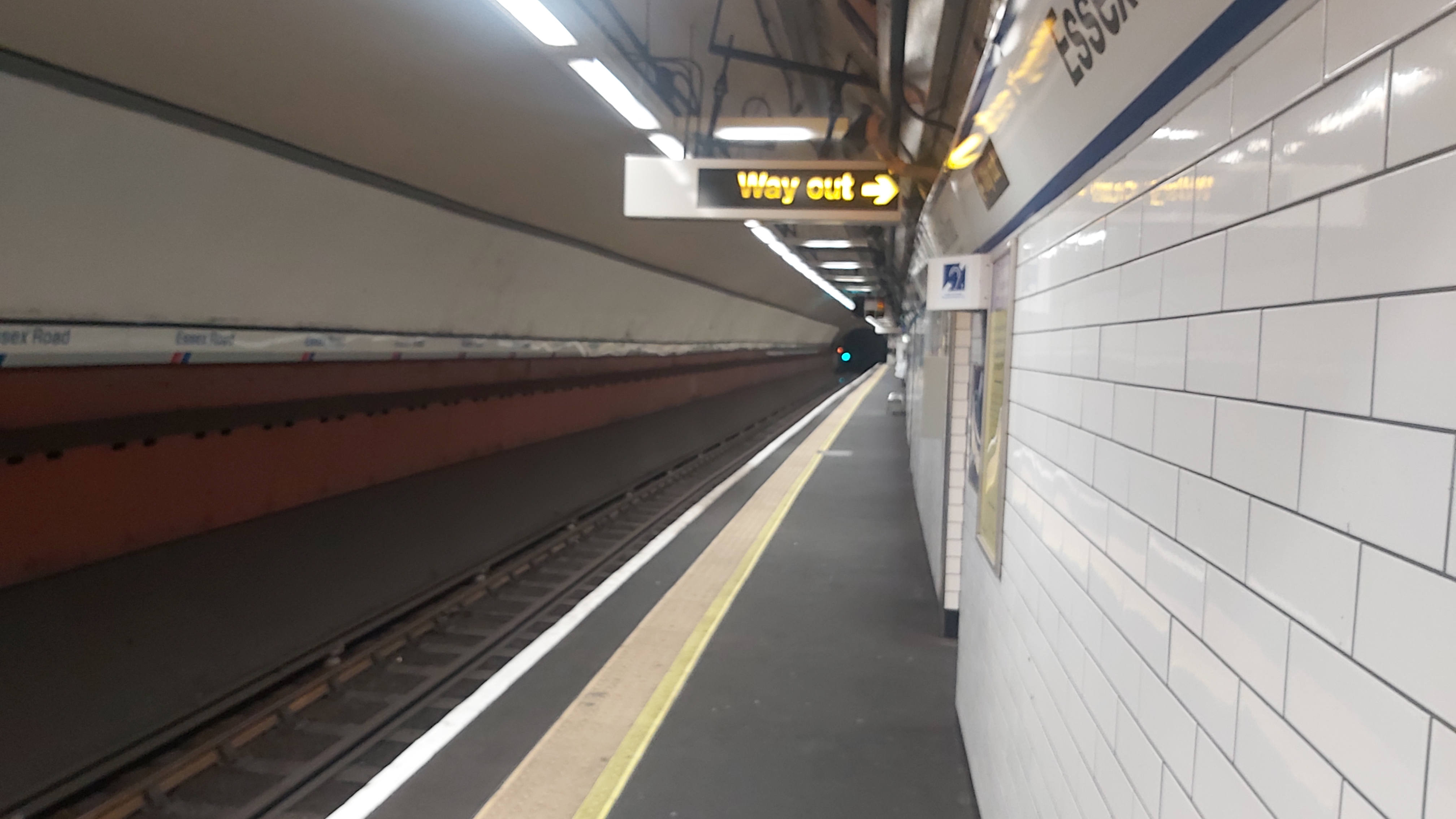
I had just disembarked my southbound train, and it was still thirteen minutes to the next northbound one, so it's not that suprising the station is empty. But for what so closely resembles a Tube station, it is a very unusual experience. Without the sound of people or trains, you can hear little things in such strange clarity.
Honestly, it was quite scary down there. There was CCTV, so I wasn't completely alone, but the platforms are narrow, and I was immediately aware that if I tripped and fell, there would be nobody to help me, but I bravely stayed long enough to photograph some Network SouthEast memerobilia.
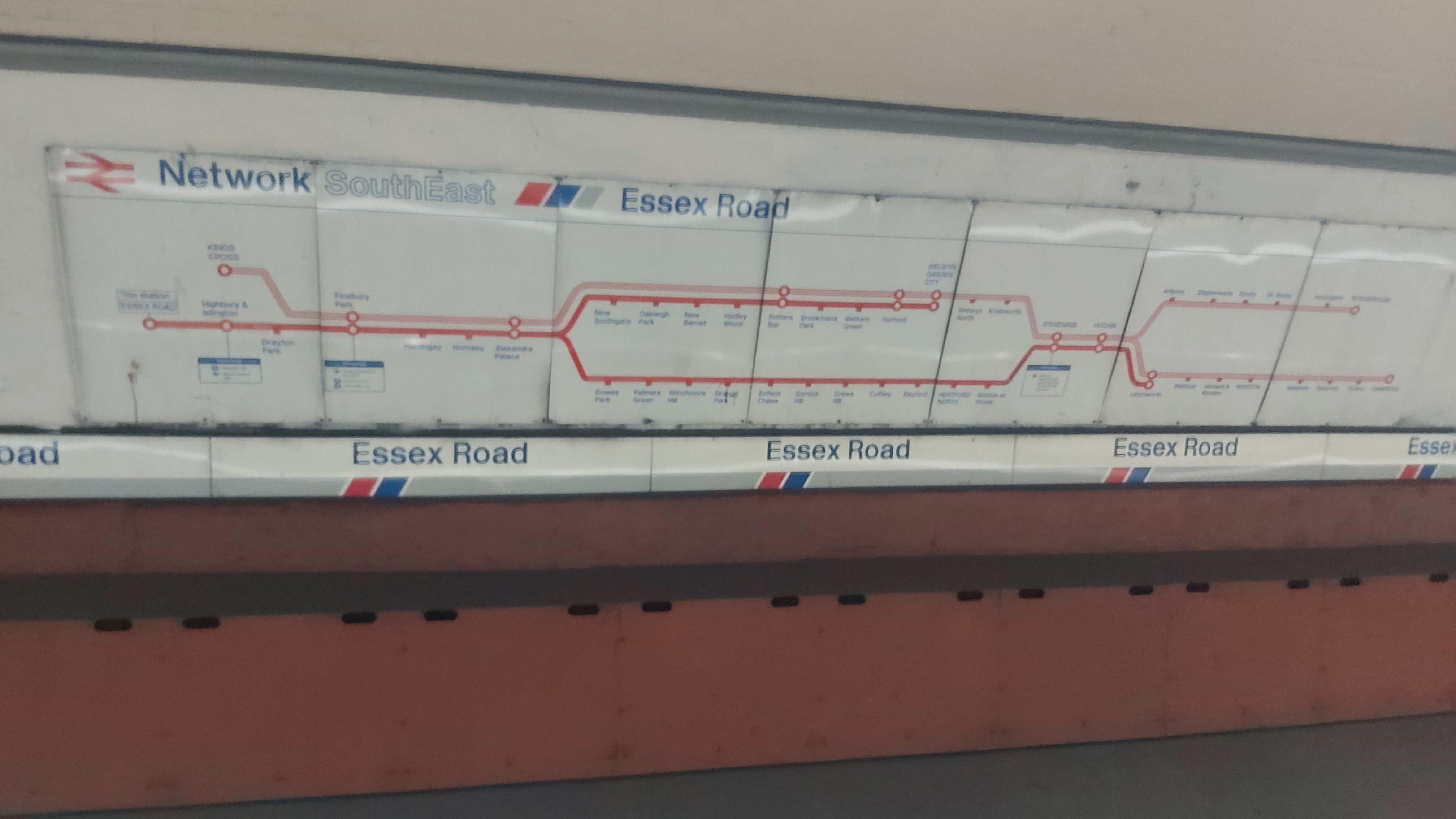
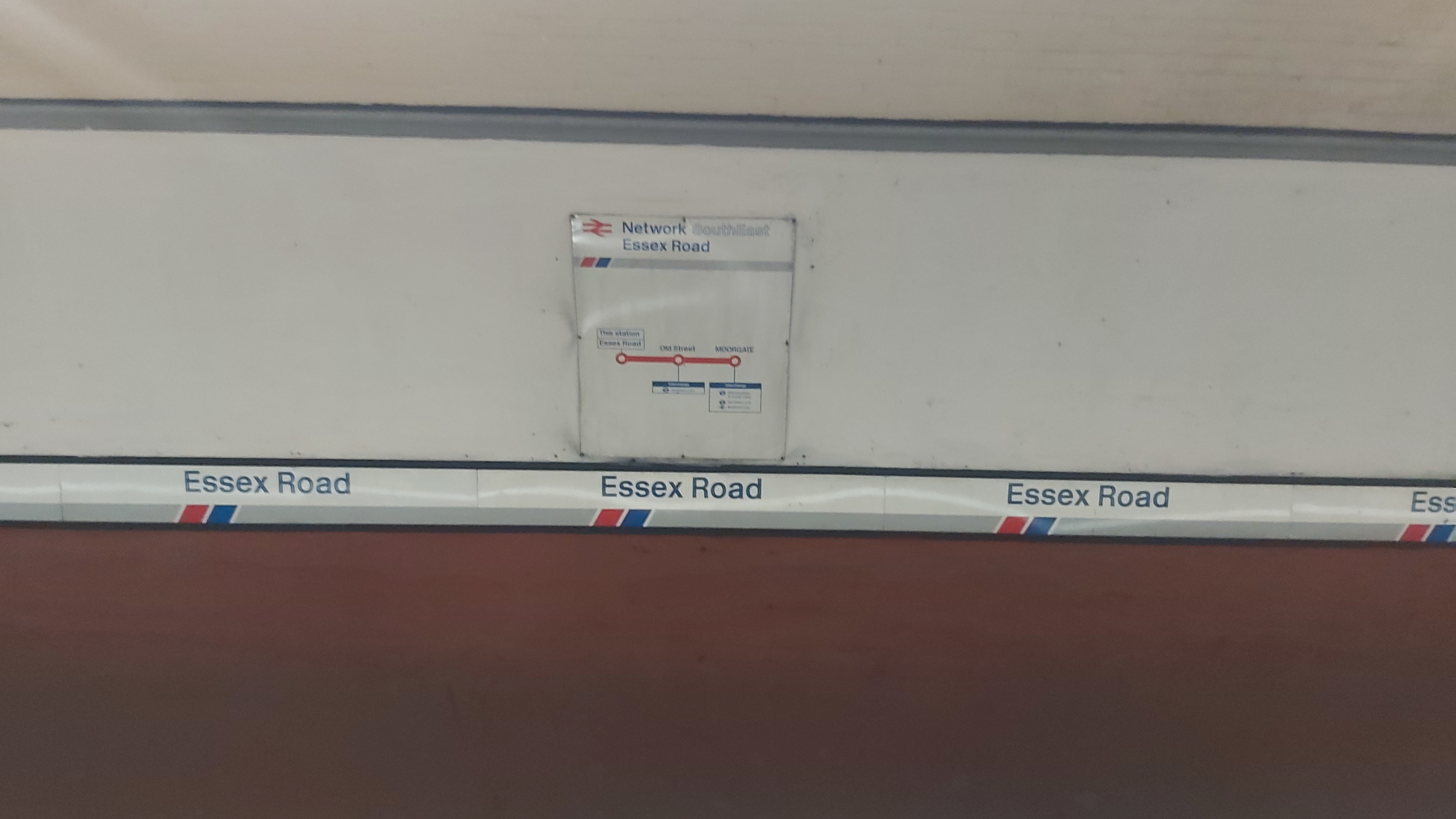
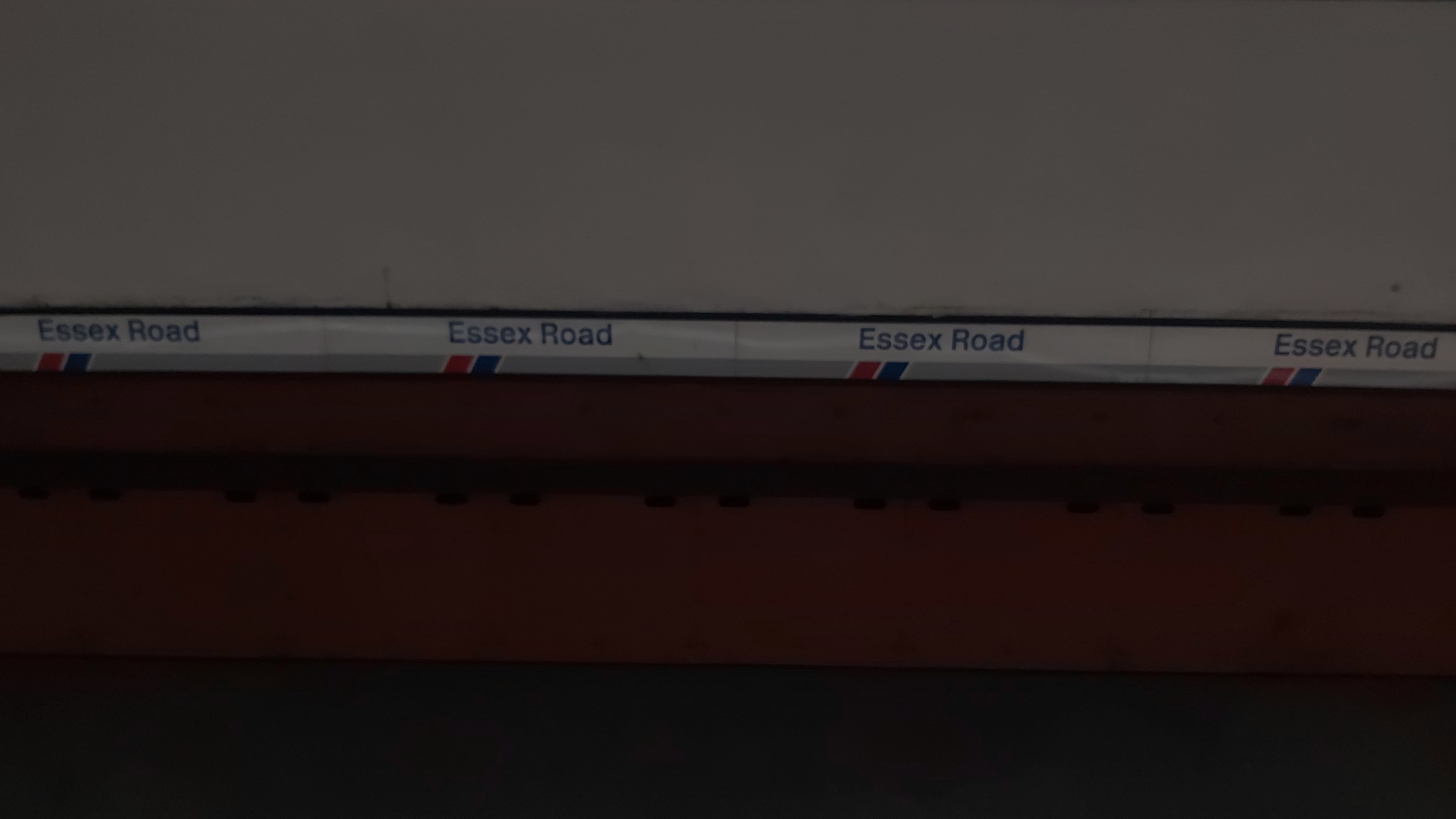
I didn't fancy hanging around, so I went topside and headed for Canonbury Gardens.
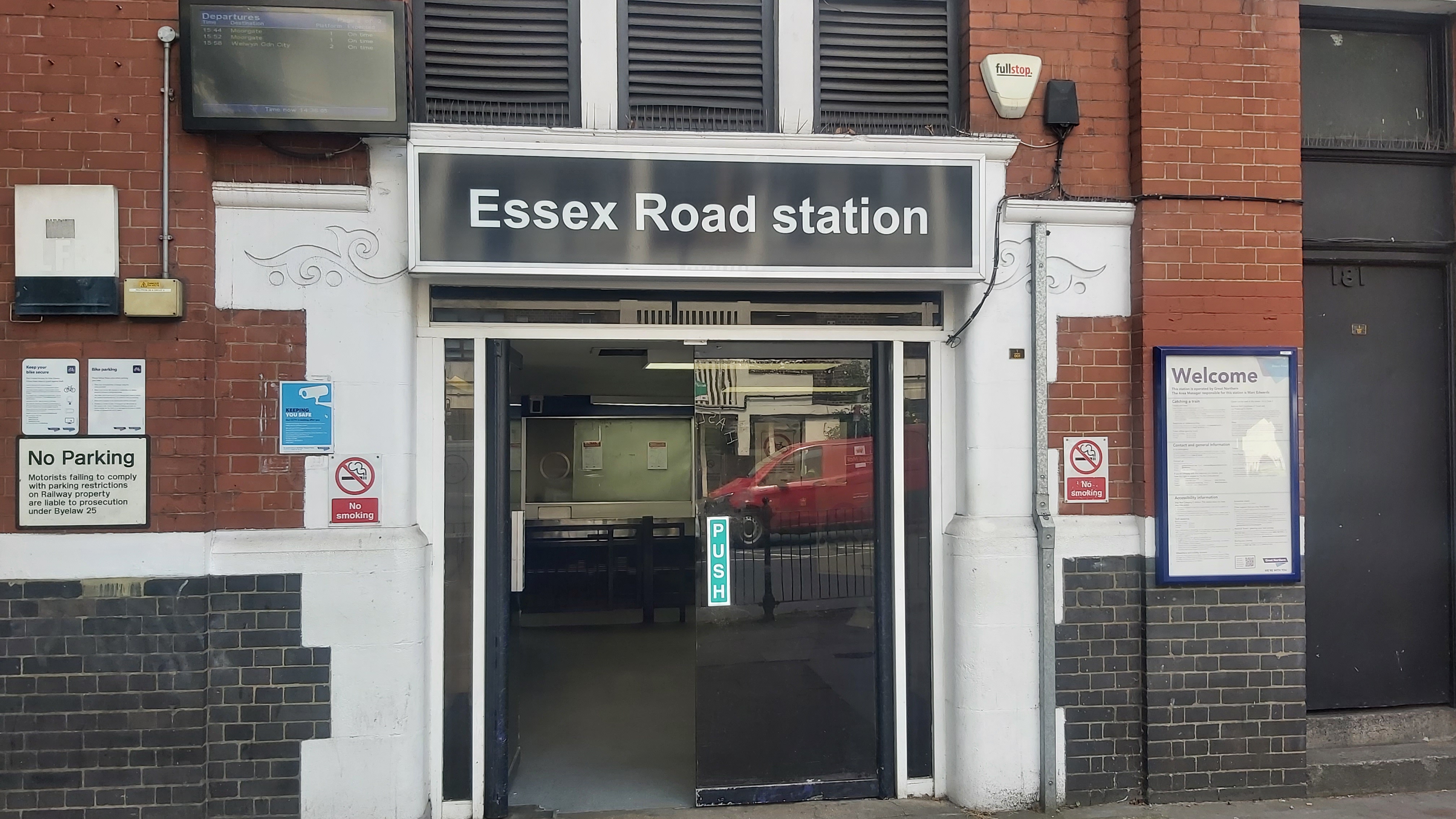
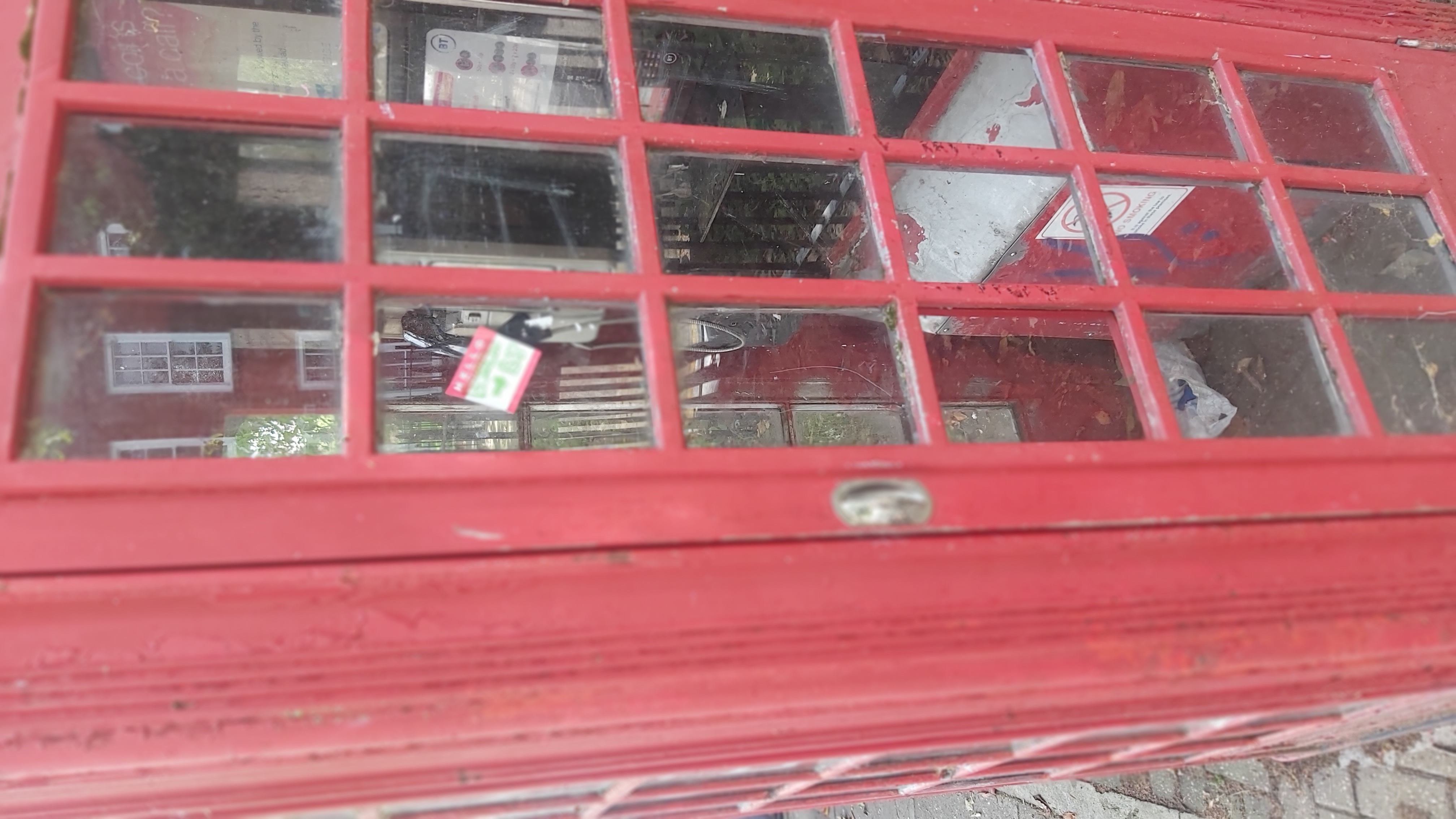
It worked! I picked up the reciever and got a tone.
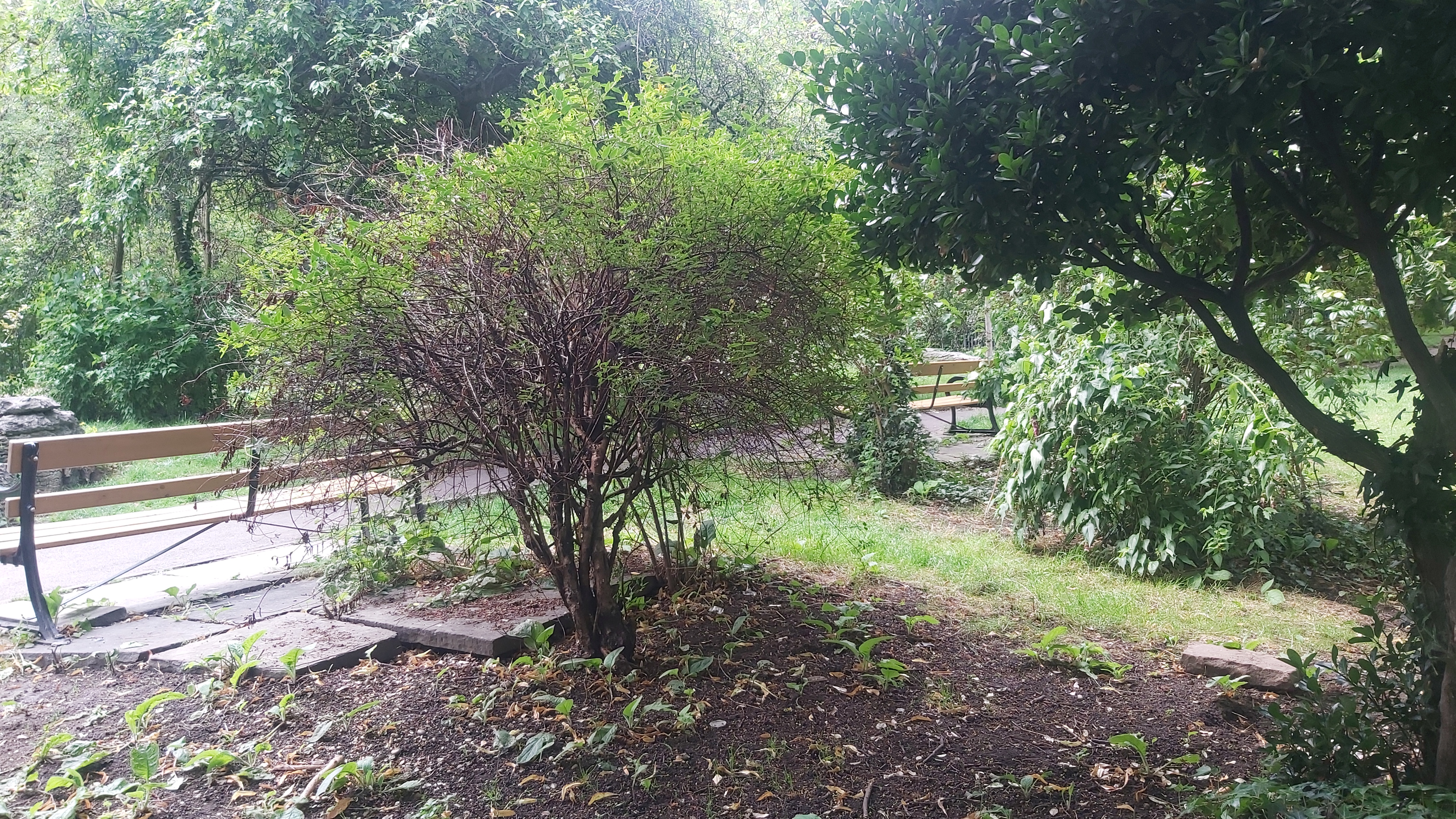
Last but not least, Canonbury Gardens, where I sat and did the crossword in the Metro.
